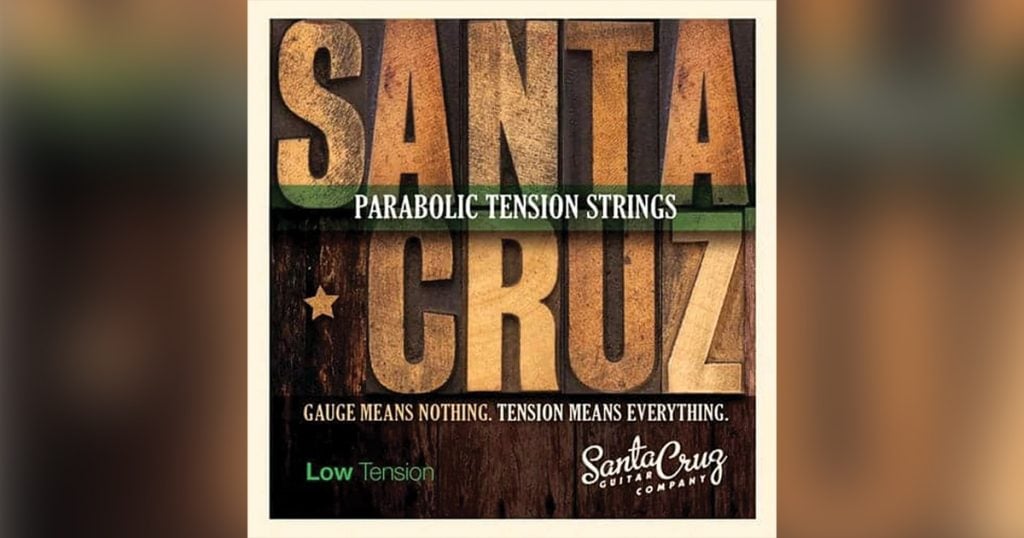Parabolic Tension Strings
When you build the signature guitar of one of bluegrass music’s greatest ever players, Tony Rice, it’s no surprise that the Santa Cruz Guitar Company puts equal attention into the design, quality and production of their in-house guitar string brand as they did in Rice’s personal instrument.
Santa Cruz Parabolic Tension Strings incorporate decades of research into the factors controlling string tension, string longevity, and musical purity. Engineered with input from SCGC artists and other professionals, the strings sit at the high end of the spectrum with products from Stringjoy, Straight Up Strings, and more.
So, yes, they’re expensive, over $20 a set street price. That’s similar to Stringjoys and other boutique string brands. But ask SCGC founder and president Richard Hoover about complaints around high guitar string prices and his retort is that guitarists complaining should check out what four high-end violin strings sell for. “It’s around $120 for the set,” Hoover explains, adding, “Guitarists should wonder what they’re missing out on.”
In the case of Hoover’s Parabolic Tension Strings, if you haven’t tried them on your favorite guitar, you really don’t know what you’re missing out on. The secret sauce in these strings, explains Hoover, is that the string tensions are properly balanced across all six strings by manipulating precisely the ratio between the core and wrap wires. Actual string tension, not string gauge, is the critical metric. The engineering behind SCGC’s string sets is based on solid physics and materials science: the diameter or gauge of a string consists of (for the wound strings) the core wire and the wrap wire combined. Both those wires can be various diameters, which would produce the same gauge but with far different tensions based on the varying core and wrap thicknesses.
The company doesn’t publish string gauges on the packaging, but our metric micrometer measured the Low-Tension’s 6th string at .054”, and the Mid-Tension’s E at .057”. Prospective buyers should note that Santa Cruz Strings receive a proprietary treatment that prohibits corrosion, but the strings do not have a greasy or slick feel.
For guitarists, this player-focused approach to strings means you no longer need fret over “True Mediums” etc. Just choose the tension you prefer for a specific guitar. We had the chance to test both versions on a variety of guitars, and these strings have had a noticeable impact on sound. A Bourgeois Country Boy OM just came alive when first strung with these wires. Similarly, there was a boost in clarity and volume on a 2017 Martin D-18 1939 Authentic Aged. But other high-end strings also provided similar benefits in tone and volume.
As a high-end string, SCGC doesn’t skimp on the essentials. One great feature is that the D string is more than long enough to run from the tuner to the staggered Frequensator tailpiece on my 1942 Epiphone Triumph archtop. That’s a 36.25” stretch a recent set of Martin SPs failed to reach, leaving the guitar with no wrapped string around the post on the wound D string because the string was too short. SCGC strings also utilize a solid brass disc at the end of the string instead of the more common ball end to enhance contact with the bridge plate.
Initially, the California-based operation only produced two set of their Parabolic Tension Strings, provided only in a Mid-Tension and Low-Tension package. The current Parabolic String lineup has been expanded to include baritone guitar strings, 12-string sets, and sets developed specifically for Irish and fingerstyle players playing in DADGAD tuning.
santacruzguitar.com/santa-cruz-parabolic-tension-strings/- 30 –

